Matthew Krishanu - The Bough Breaks
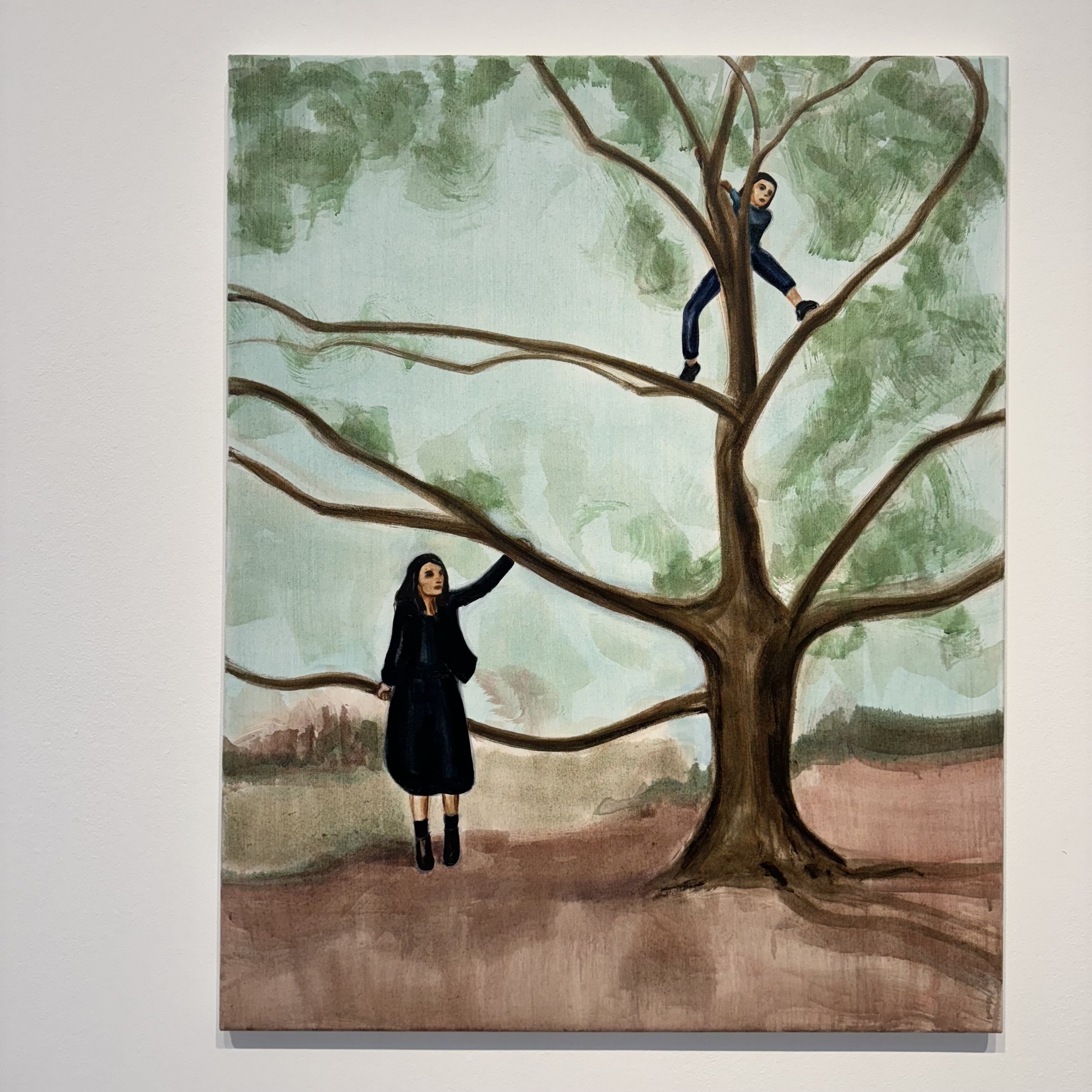
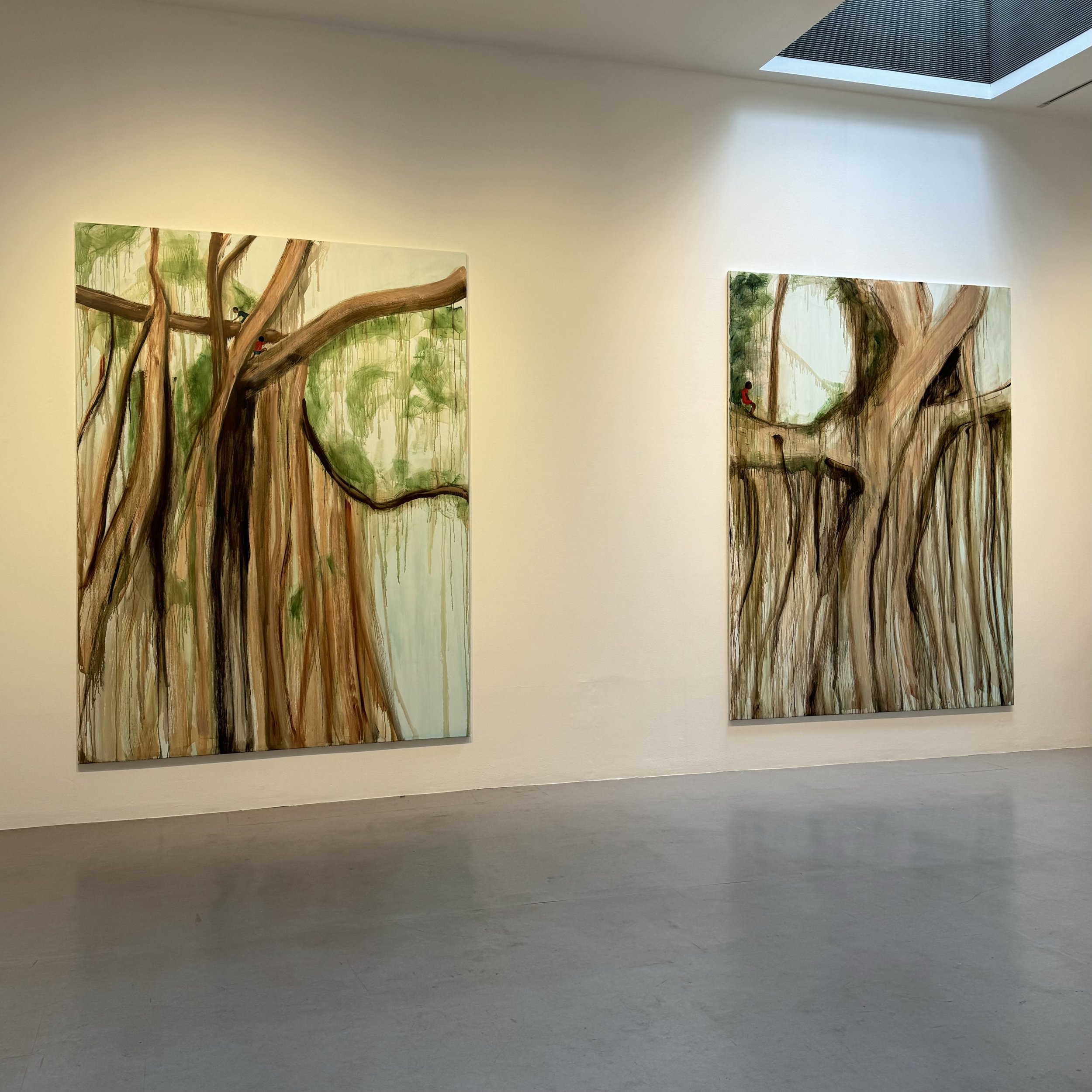
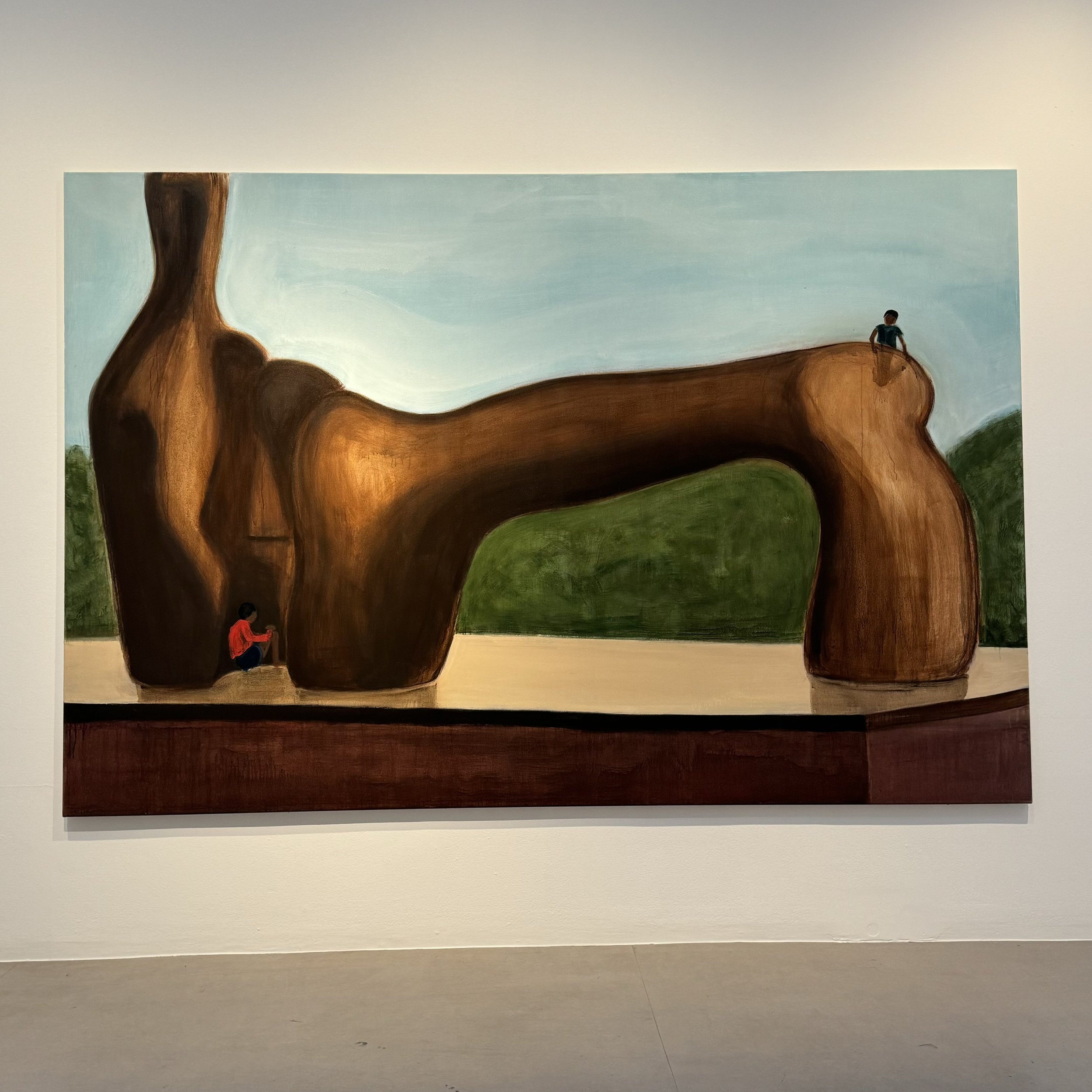
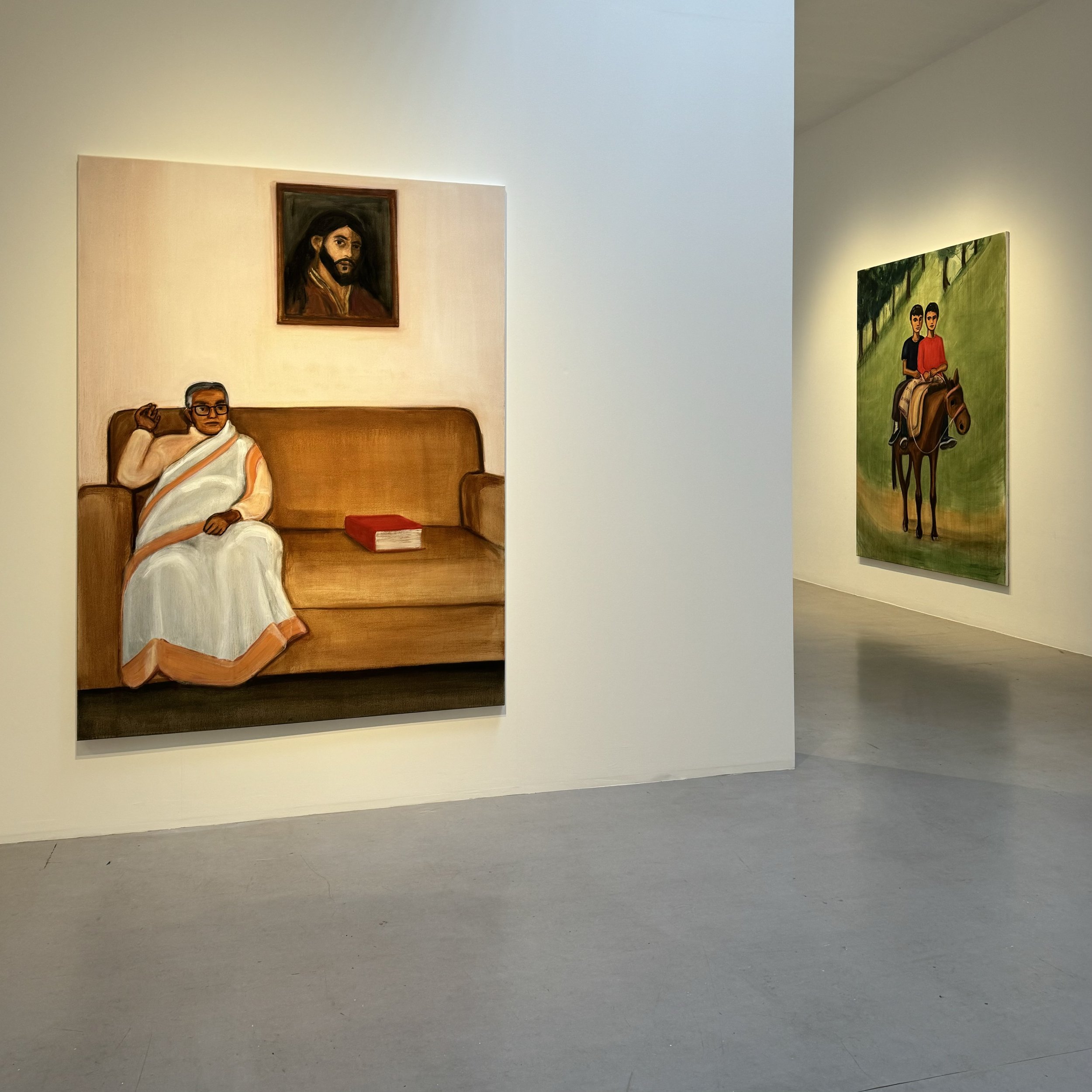



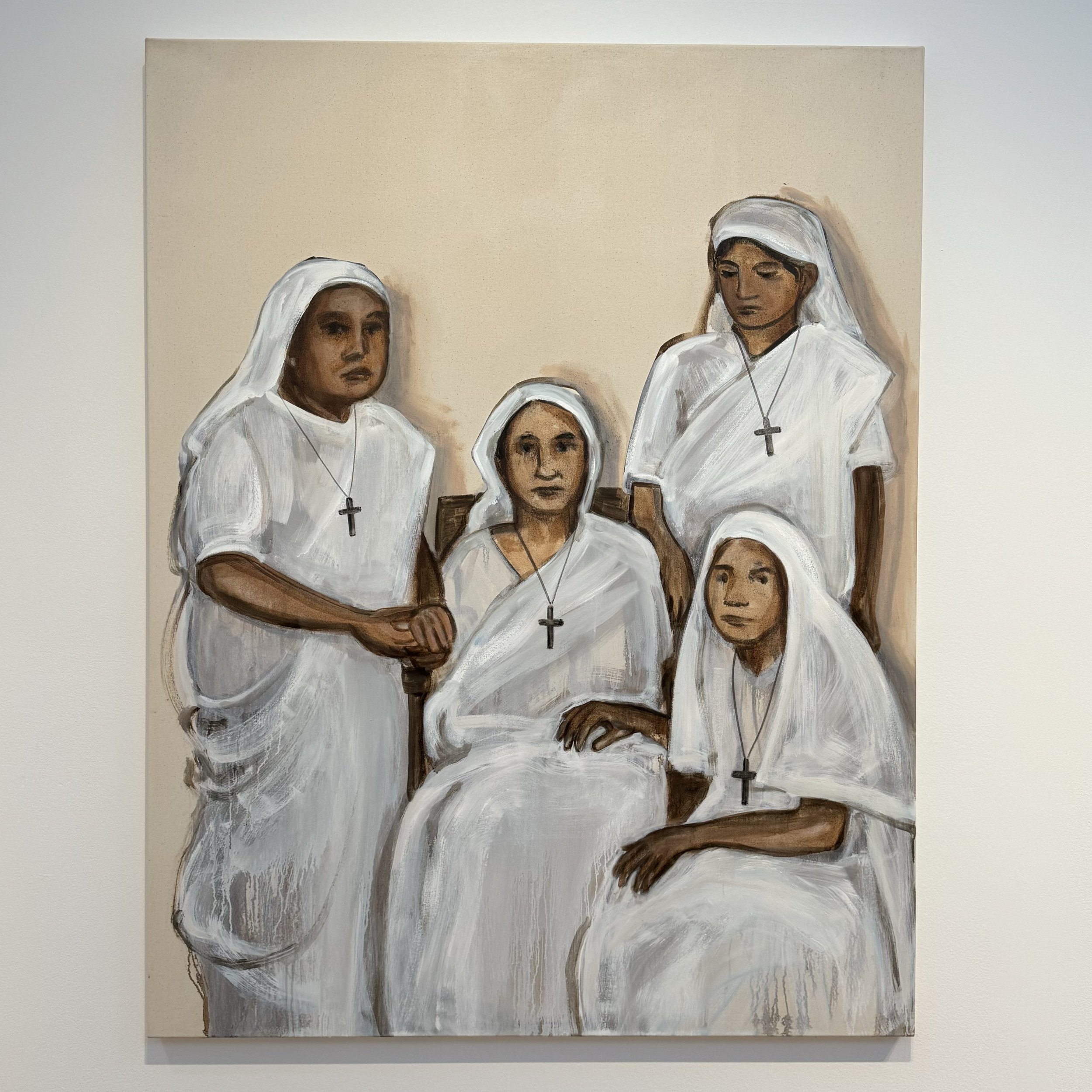

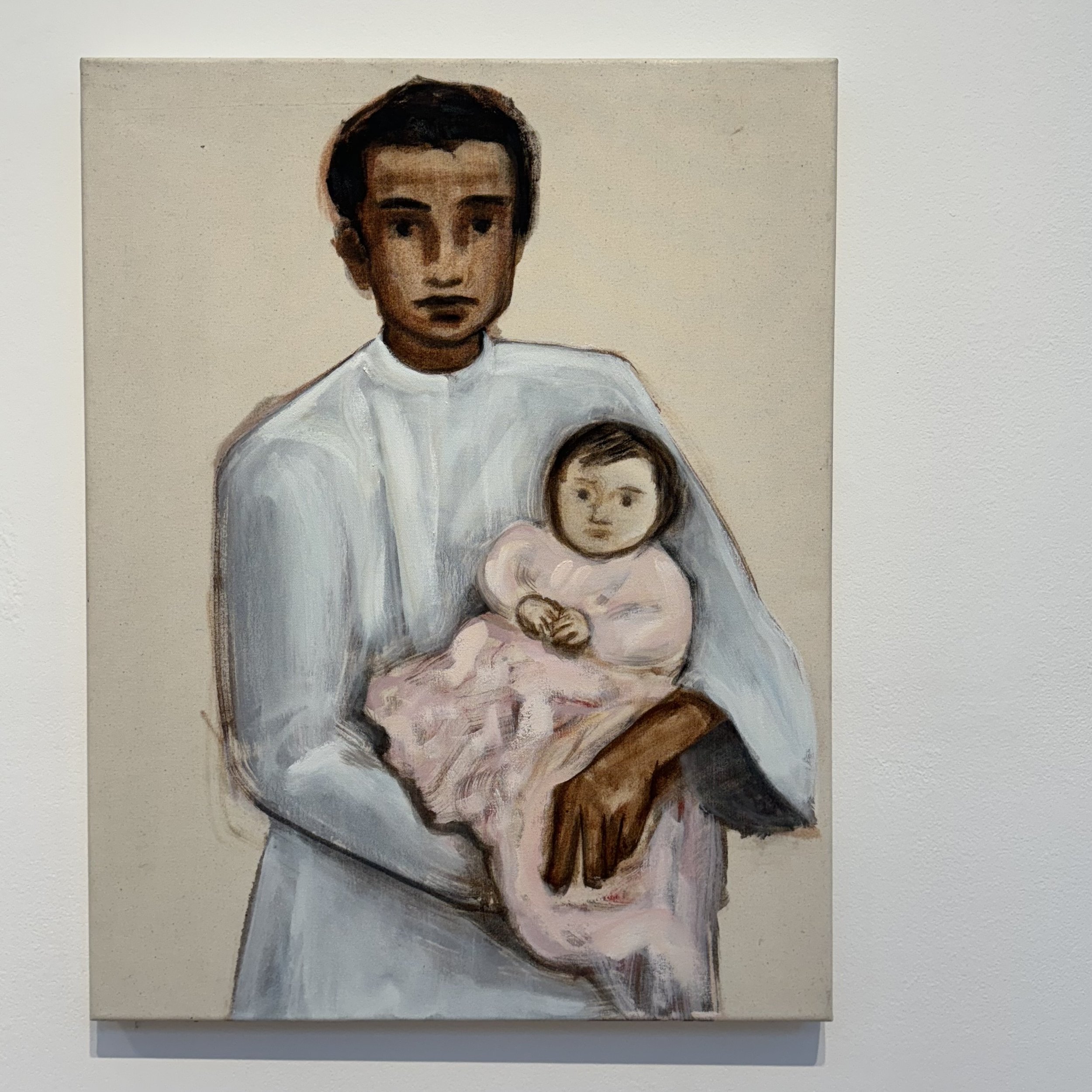
It would be easy enough to walk away from this exhibition assuming Matthew Krishanu had a strict, no-fun Christian upbringing. In the opening room are huge paintings where young boys climb banyan trees, ride a Kashmiri pony, hide inside the crevices of an oversized Henry Moore sculpture and generally do all the outdoorsy things kids used to do in the pre-smartphone era. Except… where are their smiles? They depict Krishanu and his older brother and since these are paintings, which begin with a blank canvas that enables an artist to depict whatever they desire, it’s curious that such playful scenes are filled with plain, emotionless faces.
Krishanu was born in Bradford but grew up in Dhaka, where his Indian mother and White British father, a Christian priest, worked for the Church of Bangladesh. The influence of a mixed-race, mixed-country upbringing is evident in almost every work. A painting of his mother in a sari sitting underneath a picture of Jesus. A bored looking brown boy in a missionary school classroom. A young boy’s bedroom isn’t decorated with posters of sports stars or musicians, but with a copy of ‘The Last Supper’.
Across three rooms of work the only thing more prevalent than Christian symbols are straight laced faces. No big smiles. No obvious frowns. Almost no emotion at all. I’m left with the sense that everyone depicted would rather be literally anywhere else. In one painting a man stoically holds a baby. I thought it might be Krishanu with his daughter, worried by the responsibility of being a new father. Except it’s titled ‘Priest and Baby’, so maybe the expression is simply a businesslike approach to yet another Christening.
Many scenes depict obviously emotional situations with faces that just don’t match my expectations. I struggle with this, especially as I know they are autobiographical. I wonder if the artist is carefully hiding his feelings? If Krishanu worked in film he’d be a cinema verité documentarian. Aside from the religious and geographical context, his work refrains from judgement or opinion. He shows us what his life has been like and doesn’t say much more. He’s simply depicting what is, or was.
Figurative paintings often contain subtle clues to help viewers interpret an artist’s intention but here I am forced into the uncomfortable position of having to figure it out for myself. It doesn’t help that Krishanu’s style relies on sparse compositions where lush, painterly strokes often fill more of the canvas than the details. And while figures in the scenes are rarely alone, a sense of isolation pervades almost every image. I feel a heavy weight hangs over some works, and I can’t decide if he’s looking back fondly or with sadness. In one notable exception he does both. It’s a depiction of his late wife, which he painted recently. It is of a memory from a trip they took to India, where Mathew proposed. It shows her sleeping peacefully in bed, looking happy and serene. Knowing he painted this after she passed away is both heartwarming and gut wrenching.
This was the third and largest show of works I’ve seen from Krishanu and my reactions have been consistent. I always leave in an emotive and highly contemplative state, and the reason why is both obvious and ironic: less is more. Kirshanu doesn’t overwhelm the canvas, but the paintings are by no means simplistic or quick. It takes a lot of effort to distill something down to a few core elements that can somehow still trigger powerful reactions. Compositionally there might not be much happening. In my head, however…
Plan your visit
‘The Bough Breaks’ runs until 23 June
Visit camdenartcentre.org and follow @camdenartcentre on Instagram for more info about the venue.
Visit matthewkrishanu.com and follow @matthewkrishanu on Instagram for more info about the artist.
PLUS…
Check the What’s On page so you don’t miss any other great shows closing soon.
Subscribe to the Weekly Newsletter. (It’s FREE!)
